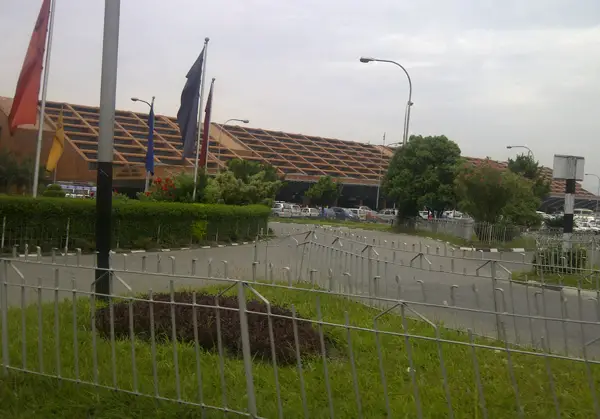If you’re an international tourist, then the only airport where you can land in Nepal, coming from abroad, is Tribhuvan International Airport in Kathmandu, the capital and most populous city of Nepal. It is the country’s only international airport while 48 other airports, spread throughout the country, serve the domestic market.
Coming down on Tribhuvan Airport you can’t help noticing the very close vicinity of the airport to the heart of the capital. Less than six kilometers to the east lies Kathmandu, a sprawling urban area located in the Kathmandu Valley, a UNESCO World Heritage Site since 1979.
The two-floor, ziggurat-like, red brick building of the airport has only two terminals, one for international and one for domestic flights. Although it is the hub for Nepal Airlines, only THAI runs a business lounge in the airport, while the other first class and business passengers flying with one of the other thirty airlines operating at Tribhuvan make use of the lounge operated by Radisson Hotel in Kathmandu.
At its formation in 1949, the airport was named Gauchar–after the geographical region where it is located—but in 1955, the then king of Nepal, Mahendra, change it to today’s name in honour of his father’s memory, King Tribhuhvan. Two years later, the tarmac was changed from grass to concrete and during the next decades, the runway was continually extended.
Nepali aviation has been plagued with accidents and the fatality numbers are in the hundreds. The first accident in the history of Tribhuvan Airport took place in 1974 and it involved a THAI flight, while the most recent accident in the country was just two weeks ago, when 15 died in a crash at Jomsom Airport in the north of Nepal, near the Annapurna section of the Himalaya.
The terminals are pretty small, catering for over 3.4 million passengers every year, and if you’ve ever travelled to Thailand, being at Tribhuvan feels like being in a big bus station in Bangkok. Megalomaniacal murals depicting a clean Kathmandu decorate the inside walls of the airport, but these “charming beauties” are overshadowed by a poorly ventilated passport control area. There are different booths for foreigners and Nepali, both of which are slow and manned by unenthusiastic officers.
With the exceptions of a few “select” countries (Afghanistan, Cameroon, Ethiopia, Ghana, Iraq, Liberia, Nigeria, Palestine, Somalia, Swaziland, and Zimbabwe), all foreigners can get a visa-on-arrival. Indian nationals don’t need a visa at all and visa fees depend on your place of origin, with countries in South Asia and China, paying less.
Coming in, there’s no duty-free shopping you can do but there’s an exchange window where you can change your dollars into rupees, the Nepali currency. When you leave, the waiting lounge has a few souvenir and snacks shops, but nothing fancy. The public toilets are no better, and if you’re a woman, it’s better if you hold it until you reach your hotel in Kathmandu or get on the plane.
The front of Tribhuvan Airport is a cacophony of gesticulating porters dressed in dishdasha-like robes and fume-sputtering motorized rickshaws drivers with their rolled-up long-sleeved shirts, all waiting for their next customer. But, little of this makes too much of a difference, as you’re now starting to take in the vistas of a fascinating South Asian culture.



looks like an awesome journey! I gotta head there when i travel asia next year